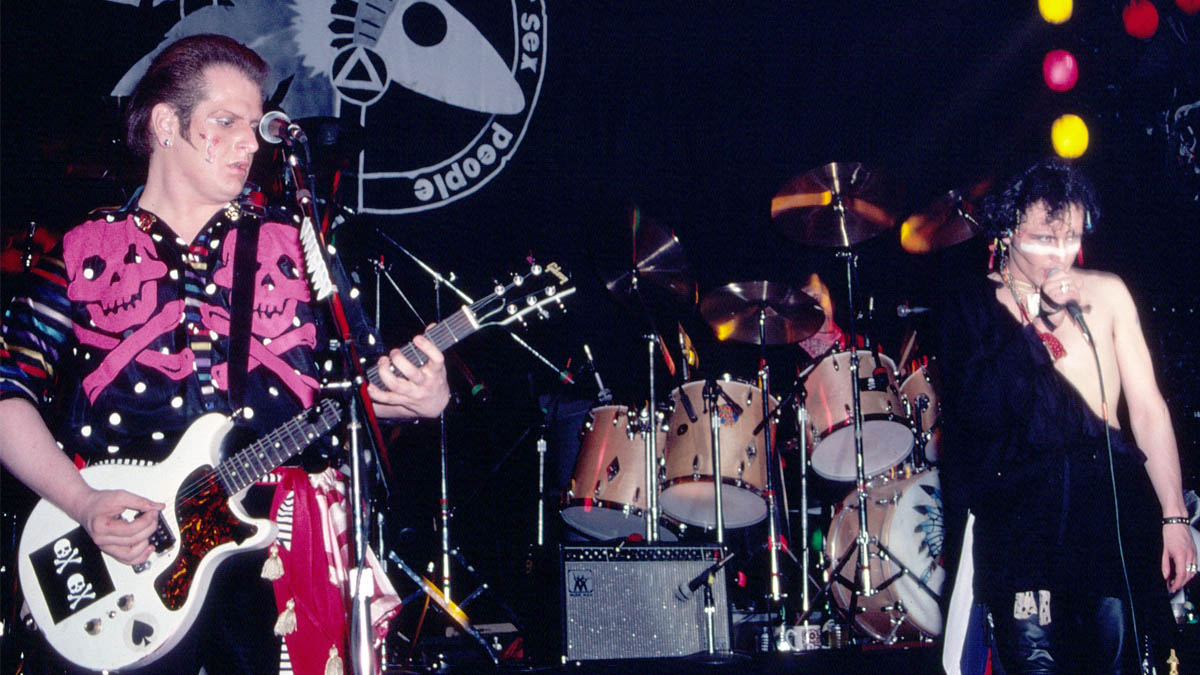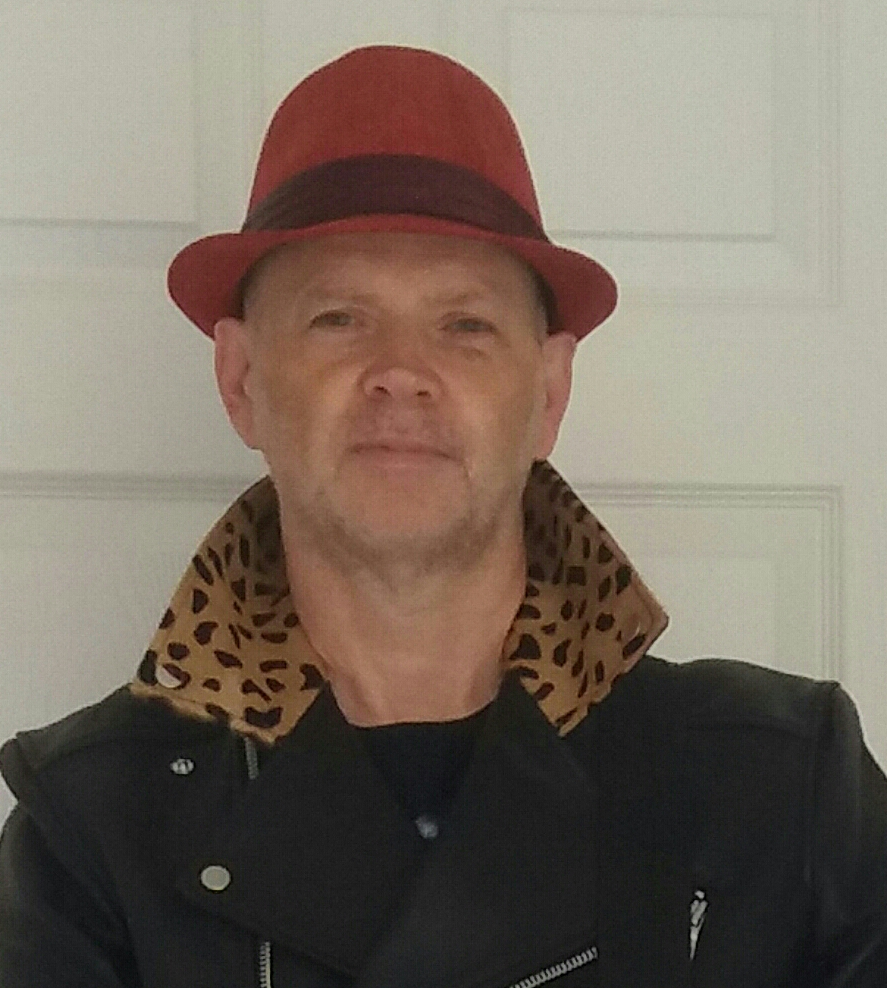“Adam wanted to completely change everything. His band had hit a brick wall”: How Marco Pirroni teamed Link Wray with Les Paul Juniors to make Adam and the Ants’ ’80s-defining Kings of the Wild Frontier
Kings of the Wild Frontier found new wave icon Adam Ant at a crossroads, and with Marco Pirroni's raw rock 'n' roll guitar and Burundi drumbeats, he found a sound that sold by the millions

Adam and the Ants released Kings of the Wild Frontier at the tail end of 1980. By the end of the following year, they’d become the biggest band across pretty much the whole world, with Kings selling 8 million copies. It seemed that only the U.S. was resistant to the waves of hysteria that “Antmania” generated.
Prior to teaming up with Adam Ant, U.K.-born guitarist and co-writer Marco Pirroni had been active on the early British punk scene, playing with Siouxsie and the Banshees at their first-ever show (with Sid Vicious on drums). He’d also been in indie bands the Models and Rema Rema, but he’d enjoyed only modest success.
Meanwhile, Ant – with the original lineup of Adam and the Ants – had become a fixture on the U.K. indie live circuit and had built a cult following – but he seemed to have peaked. Pirroni agrees.
“The music Adam was making was entirely different from what we came up with,” he says. “This change in direction was a deliberate move on Adam’s part to reinvent himself. He wanted to completely change everything. His band had hit a brick wall. They were doing well in terms of live audiences, but things weren’t growing. I don’t think they could have ever been a chart-topping act.”
How did the creative process work when you got together?
“Virtually everything was newly created between us, except Ants Invasion, which he already had on hand. There were a few tribal things he’d been working on, but we didn’t use those, more the ideas behind them. He’d paid [impresario and Sex Pistols manager] Malcolm McLaren what you could almost think of as a consultancy fee, and [McLaren] suggested some concepts that Adam was hesitant to apply.
“But I told him that he’d paid for them, so he was at liberty to use what he wanted. Probably the only really useful thing was McLaren’s suggestion that using the idea of Burundi tribal beats could be interesting. There was an album called Warrior Drums of Burundi that was quite influential on what we came up with. So I would usually have a chord sequence, Adam would have some kind of tribal chant, and we’d go from there.”
Get The Pick Newsletter
All the latest guitar news, interviews, lessons, reviews, deals and more, direct to your inbox!
It seemed like the perfect outlet for you to channel all of your influences – Link Wray, glam rock, Mick Ronson, etc.
“It definitely was. Everything I’d been dying to do for years came out in the process of working those songs up with Adam. Pretty much everything I came up with made the cut; we were both very much on the same page. Burundi beats and Link Wray seemed to be a perfect match – they were both really raw. I can’t really think of much that Adam didn’t think worked.”
There’s a real art to taking a bunch of influences and producing something unique that doesn’t sound like you’re just recycling.
“When we stuck everything together, even though we were possibly, at times, even trying to make an influence obvious, it came out as something else, which was the magic of the sound we created. I don’t know how you plan to do that; it just worked.”
Did you have everything ready to go before you went into the studio?
“Everything except Dog Eat Dog, which was when the label did that thing where they say they haven’t got a single, so Adam and I came up with that one lunchtime. We made a demo of it, which, unfortunately, doesn’t exist anymore, as we taped over it.”
I’m surprised Antmusic didn’t sound like a single to them.
“I’d agree, but at the time it didn’t seem obvious, and we didn’t really have an idea what would be the ideal first single prior to coming up with Dog Eat Dog.”
How long did you spend recording the album?
“It was about six weeks. Everything was first takes, as we constructed the tracks in the studio. We’d never played any of those songs live, so I hadn’t envisioned what it would sound like when it was completed. It was just something that grew and evolved.”
A lot of the tracks feature layers of textured guitar noise and feedback as part of the overall sonic stew. Had you planned out what you were going to do for those parts?
“No, I’d never done that before. I had so many ideas in my head that I just had to put them all down. I have since learned to try to edit myself and rather than put five tracks down maybe keep it to two or three at a maximum. There is a lot going on and it’s actually very dense in terms of guitars. I suppose with hindsight I might have put fewer tracks down, but then people are always saying they’d have done things differently years later.”
What guitars and amps did you use to record the album? You got a lot of different tones and textures.
“All I had was a Marshall and a Fender Twin, and for guitars, I had Adam’s Fender Telecaster and my white Les Paul Junior; I don’t know what year it is though, because it’s been resprayed and had God knows what done to it. I think the mix of the single coil on the Telecaster and the P-90 on the Junior is great. They work really well together. I’m in love with Juniors; the P-90 is my favorite pickup.”
There’s a clear nod to Link Wray on Killer in the Home, isn’t there?
“Yes. It’s a borrow rather than a steal. [Laughs] At that time, nobody had really heard of Link Wray in the U.K. I bought the Early Recordings album with the yellow cover just because I liked the album jacket; I didn’t know what the music was going to be like, but when I started listening to it I connected with it. I remember thinking, ‘I can actually play all these riffs.’ [Laughs]
“He was very much an unknown figure to me. I felt like I must have been the only person who knew who he was at the time.”
Were some of the great B-sides from that period recorded at the same sessions as the album?
“Fat Fun and Fall In were on the same sessions, and Physical was recorded while we were mixing the album. They were very much punk songs, and we recorded them with a rawer approach then the rest of the album. If they’d been on the record instead of some of the lighter tracks, it would’ve had a very different feel overall.”
Kings of the Wild Frontier has a great, epic riff. Who came up with that?
“That was Adam’s riff, and I came up with the chord sequence. He played it to me, and I knew it had something about it that was very cinematic. I’d been a huge Ennio Morricone fan at that time – The Good, the Bad and the Ugly soundtrack was a particular favorite of mine and was a big influence on the album, as was John Barry.”
Slade were the first band that really made me want to play. That was quickly followed by Mick Ronson and the Who
Who were the artists that made you want to play guitar?
“Slade were the first band that really made me want to play. That was quickly followed by Mick Ronson and the Who. Roxy Music became my favorite band, but I guess they’re not really very guitar focused.
“The first guitar I got was a very cheap, brown Arbiter SG copy with a bolt-on neck and a tremolo arm that didn’t really work. The first good guitar I had was a Gibson Les Paul Signature, which I used with the Banshees at the 100 Club [in London] in 1976 [the band’s first show, with the aforementioned Sid Vicious].
“It was pretty bad. I swapped that for a Les Paul Custom that got stolen. After that, I got a white Junior, which was just to be like Johnny Thunders. I felt like I was channeling Johnny with the Junior; I tried to channel Mick Ronson when I had the Les Paul, but I couldn’t get on with Les Pauls.”
Did you go on a spending spree when the big money started coming in?
“Oh, yes. [Laughs] I bought a couple of old Firebirds, one of which I had painted red. I got loads of old Juniors. Then I was in Gruhn Guitars in Nashville, and I asked if they had any Juniors, and they said they didn’t put them on display as nobody wanted them, so I bought six on that visit. [Laughs] I don’t really have many acoustics. I have one of those 12-strings like David Bowie’s. I think maybe in total I’ve got about 60 guitars.”
I was in Gruhn Guitars in Nashville, and I asked if they had any Juniors, and they said they didn’t put them on display as nobody wanted them, so I bought six
How did you come to acquire the iconic John Birch “Super Yob” guitar, which used to belong to Dave Hill of Slade?
“We were doing a run of shows in Birmingham, and I went out for a walk and saw it in this music store window. I couldn’t believe it was real, but anyway, I went in and asked how much it was, and they were really condescending and said, ‘You can’t afford it, son.’ I insisted I could, so they said it was £500 – which was quite a lot 40 years ago.
“Anyway, I said I had £50 in my pocket, so I left that as a deposit and said somebody would pay the balance and pick it up later. I had one of the roadies go get it. The guys in the shop had no idea who I was, though when the roadie told them, I think they must have really kicked themselves. I’m sure they’d have asked a lot more if they’d known. We were probably the biggest band in the U.K. at the time.”
Didn’t you also buy a Gretsch White Falcon from Brian Setzer?
“He rang me up late one night asking if I wanted to buy some guitars. I bought that and a really good Gretsch 6120 off him, which I’ve still got. I sold the Falcon, though, as I didn’t really like the sound, although it is a fantastically cool-looking guitar. I got made an offer I couldn’t refuse. [Laughs] Adam used it to pose for the press shots for Vive Le Rock [1985].”
Do you ever listen to KOTWF?
“No, but I am going to go back and listen to it now that we’ve talked. I think Friend Or Foe [1982] is actually my favorite Adam and the Ants album – the one we did without a band. [Laughs] Kings of the Wild Frontier is up there, and its success was literally life-changing for us, so you really can’t knock that.”
- Kings of the Wild Frontier is out now via Legacy Recordings.
Mark is a freelance writer with particular expertise in the fields of ‘70s glam, punk, rockabilly and classic ‘50s rock and roll. He sings and plays guitar in his own musical project, Star Studded Sham, which has been described as sounding like the hits of T. Rex and Slade as played by Johnny Thunders. He had several indie hits with his band, Private Sector and has worked with a host of UK punk luminaries. Mark also presents themed radio shows for Generating Steam Heat. He has just completed his first novel, The Bulletproof Truth, and is currently working on the sequel.
“I was writing songs from eight years old, but once I got a guitar I began to deeply identify with music… building an arsenal of influences”: How Lea Thomas uses guitars her dad built to conjure a magic synthesis of folk, pop and the ethereal
“I liked that they were the underdogs. It was not the mainstream guitar. It was something that was hard to find”: Vox guitars deserve a second look – just ask L.A. Witch’s Sade Sanchez, who’s teaming hers with ugly pedals for nouveau garage rock thrills











